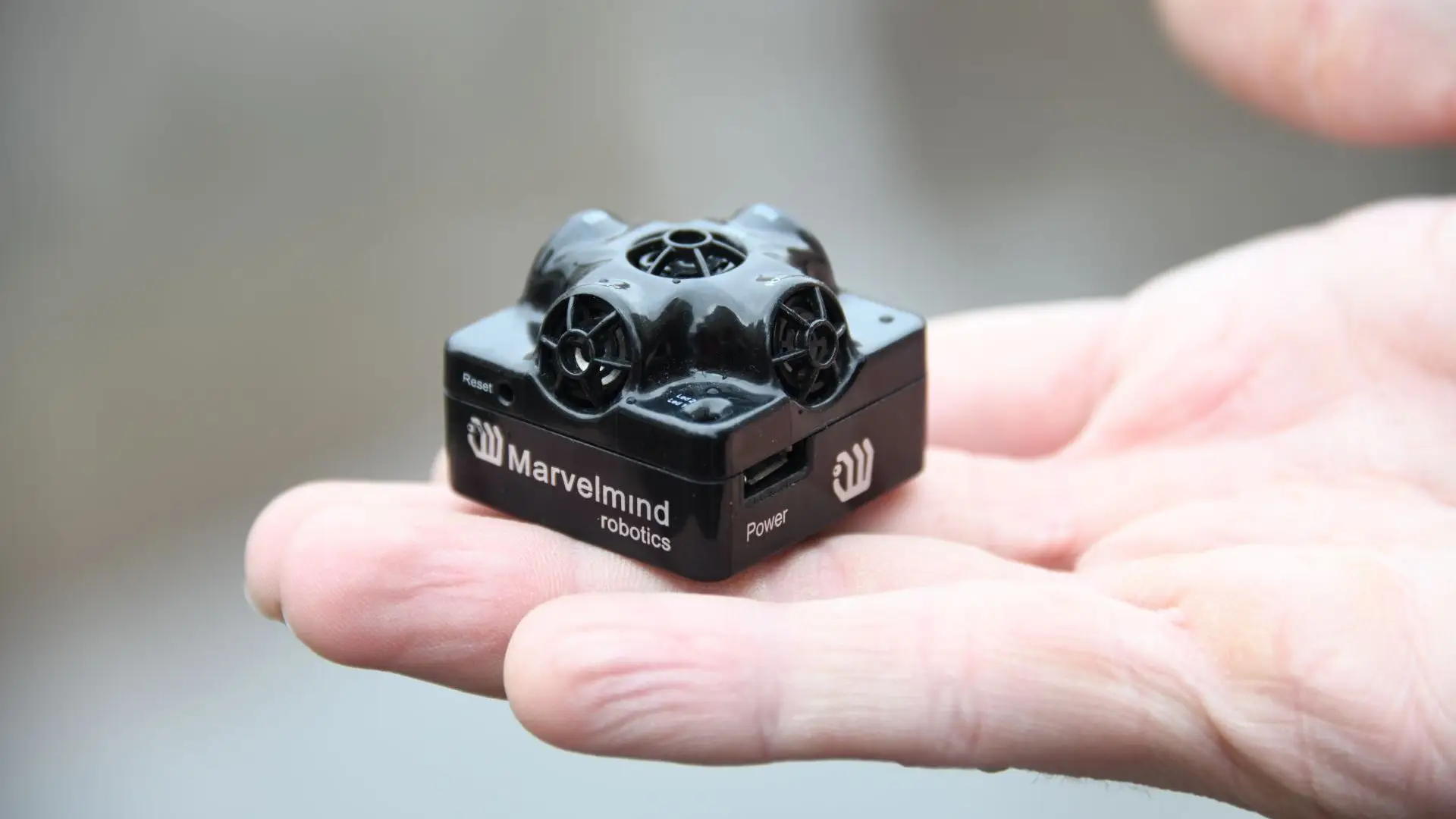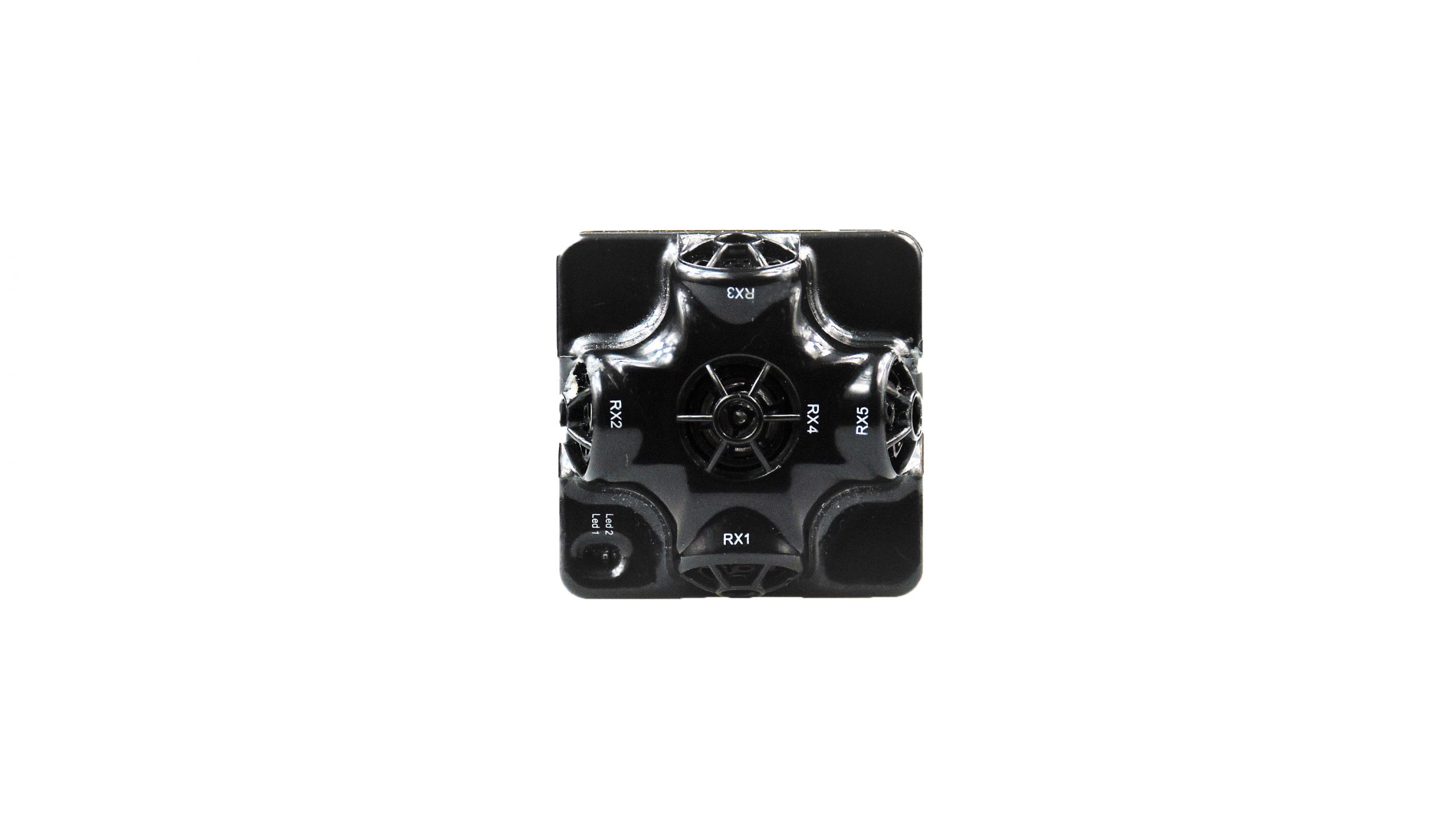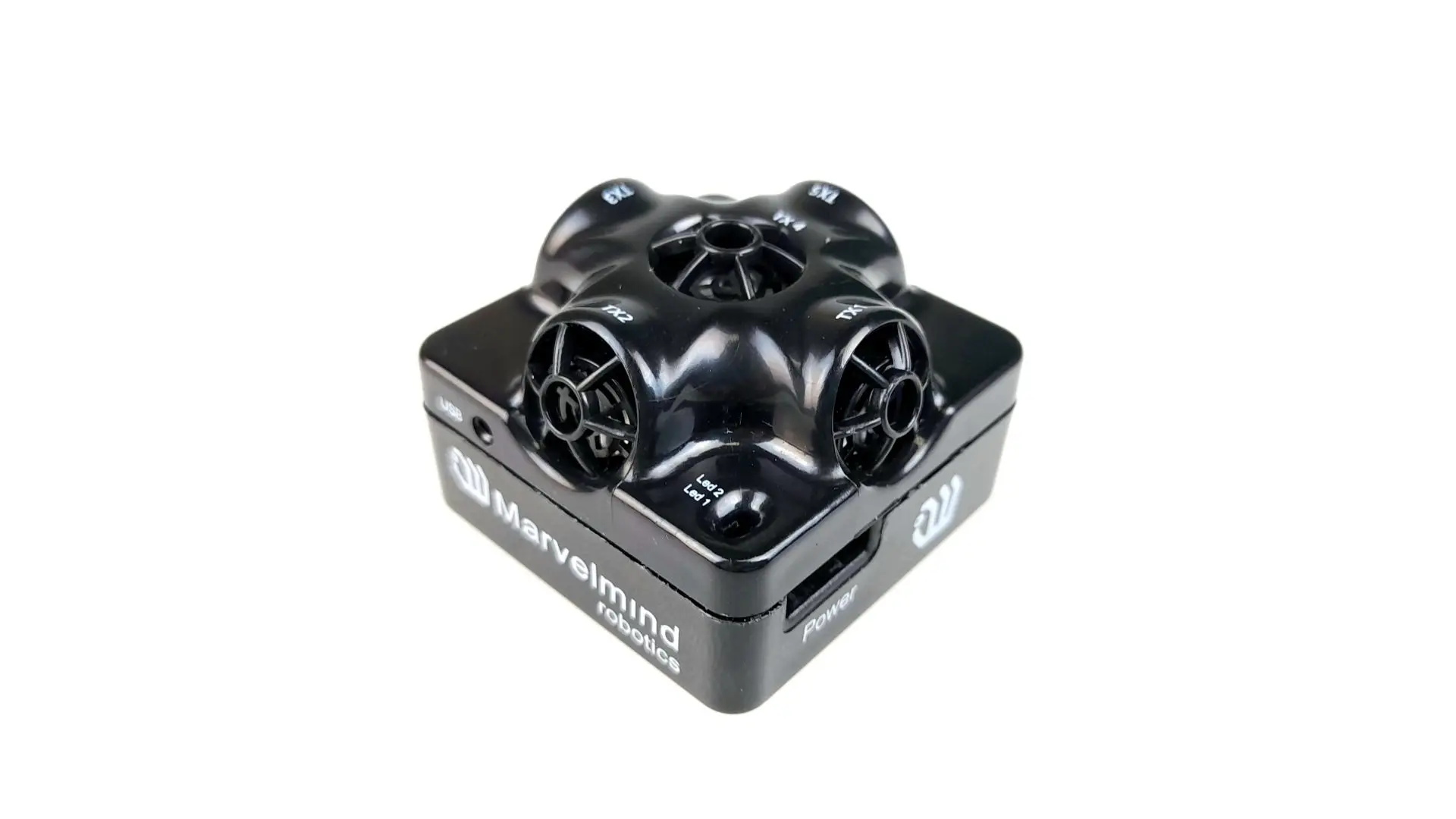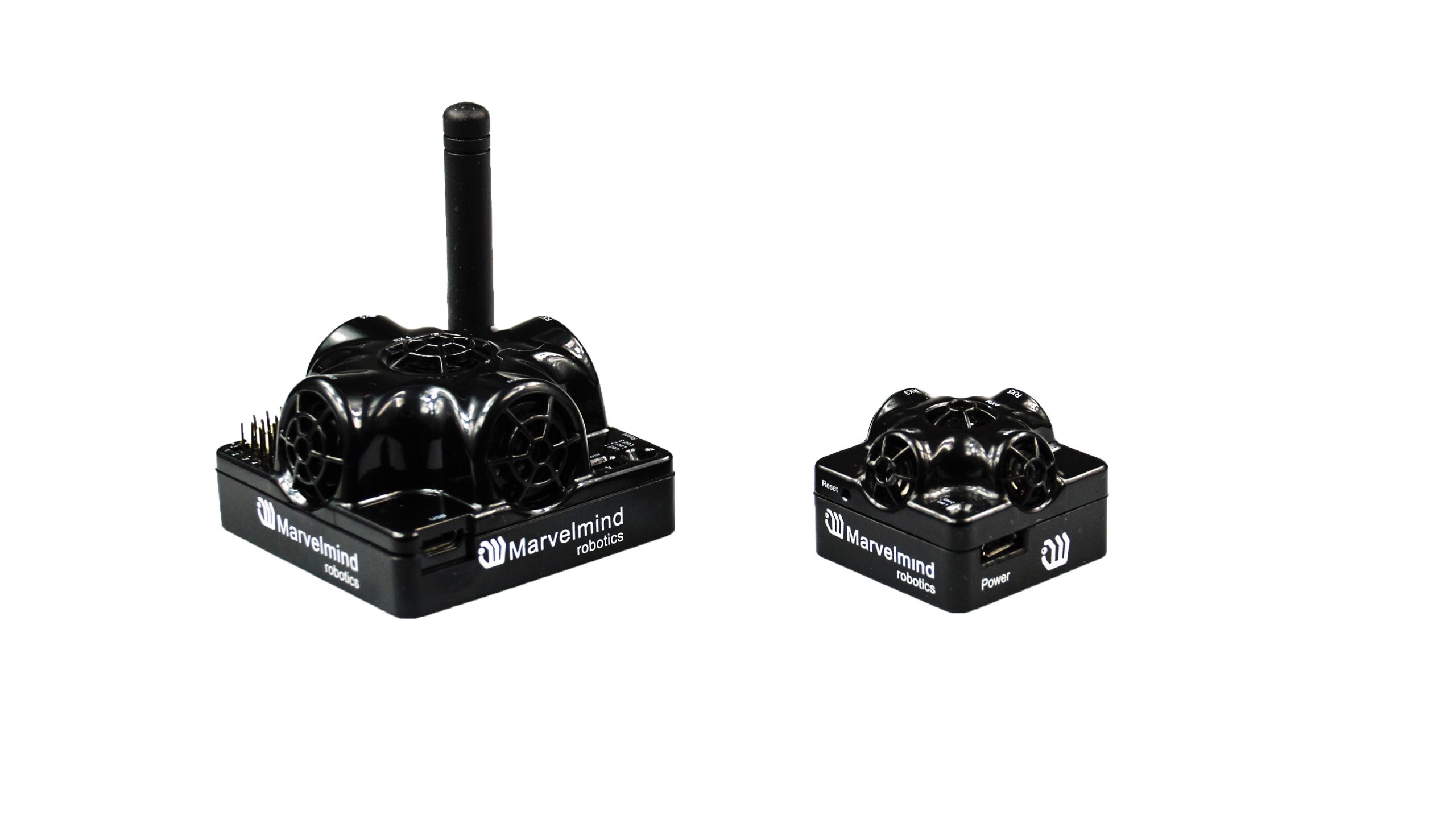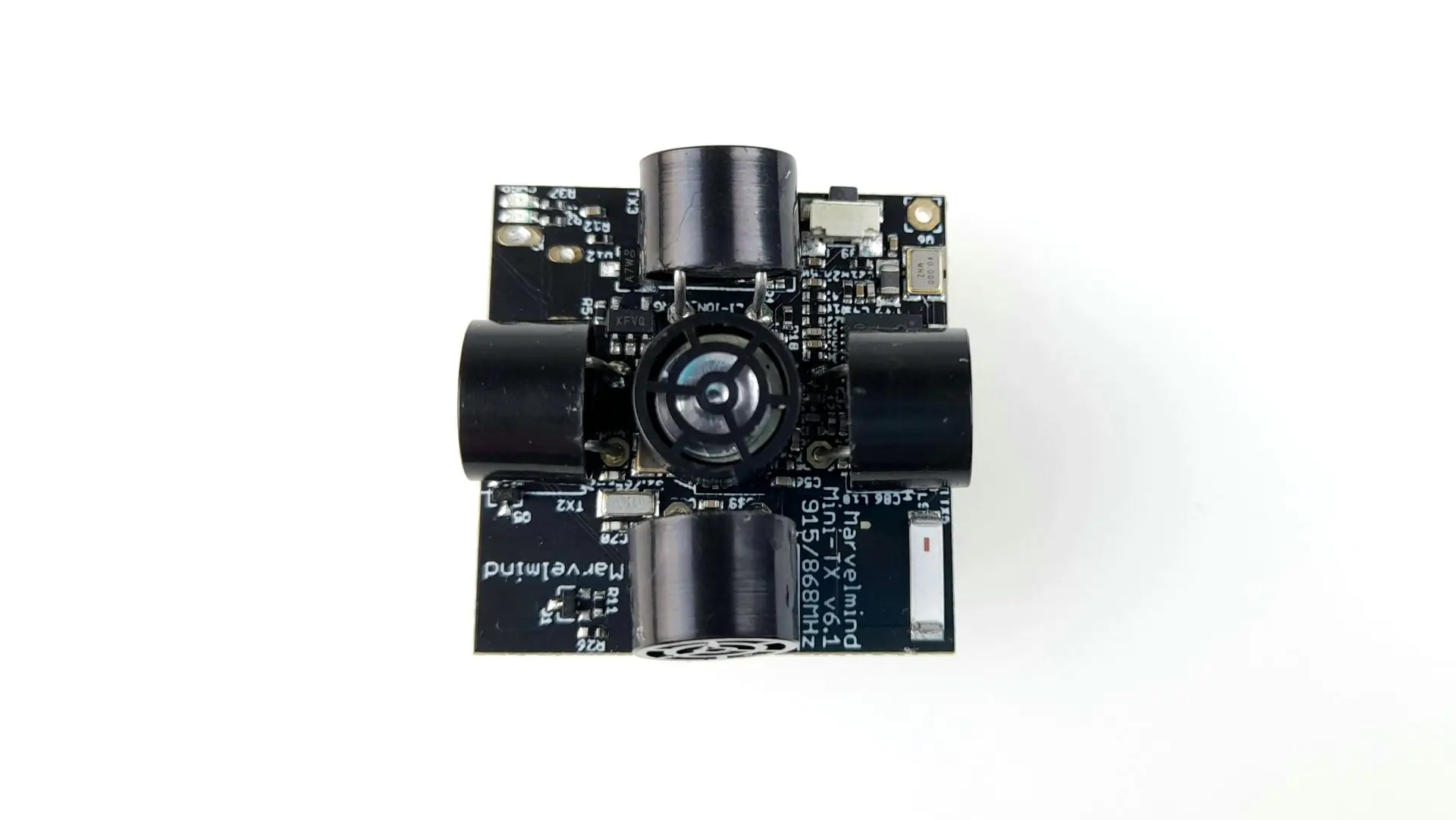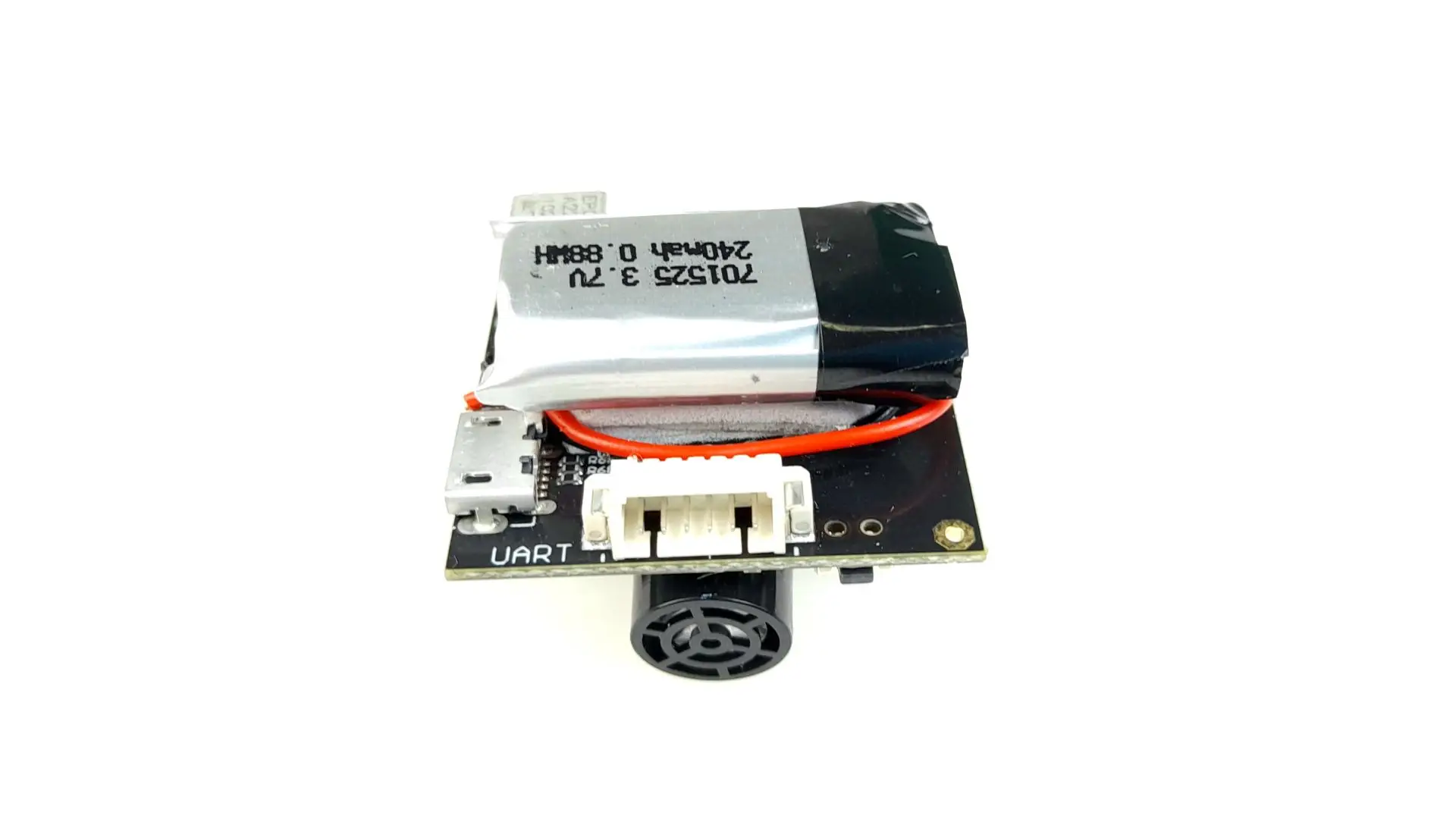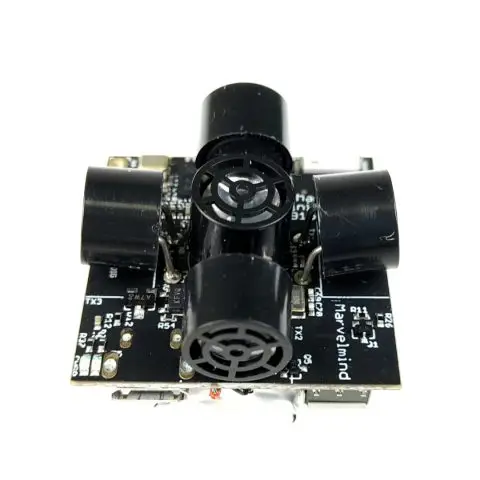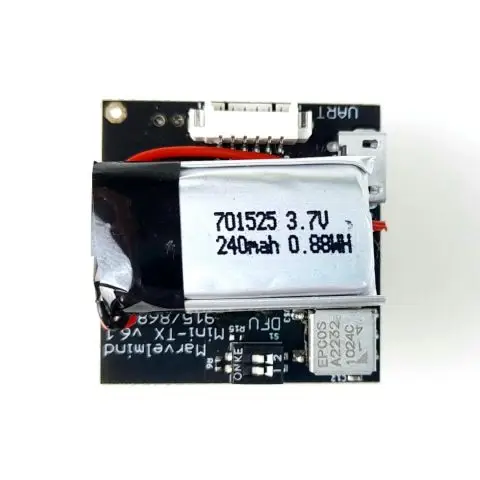Beacon Mini-TX is a TX-only mini version of Super-Beacon. Mini-TX is particularly good for tracking weight-sensitive mini- and micro-drones.
The latest hardware version of Mini-TX makes is very easy to connect with PixHawk as well because it has a dedicated 6-pin socket on the board. With just two wires (UART TX and ground), it is possible to get the location data from the Mini-TX to PixHawk and make the PixHawk believe it is connected to a real GPS.
Comparison of Mini-TX to Super-Beacons:
- Mini-TX is a TX-only beacon – it can transmit ultrasound but can’t receive it. Super-Beacons and Beacons HW v4.9 is dual-use beacons – they can receive and transmit ultrasound
- Mini-TX is smaller and lighter: 47x42x15mm & 25g vs. 55x55x33mm & 62g (or 55x55x64mm with antenna). Size is the key advantage of Mini-TX. Without battery and housing – the bare board with transducers – it weighs just 6.4 grams
- Battery – 250mAh vs. 1000mAh in Super-Beacons and Beacons HW v4.9. But Mini-TX has a new, more efficient ultrasonic TX module; thus, battery lifetime in TX mode is even superior to the Beacon HW v4.9
- Tested battery lifetime with 8Hz – 96h. With a lower update rate – nearly proportionally longer
- Mini-TX (newer hardware Ver. 2) has a micro USB (virtual UART) output for connectivity to the Dashboard or, for example, Raspberry Pi, and it also has an additional 6-pin socket for the external UART connectivity, for instance, with PixHawk
- Mini-TX, like Super-Beacons, has a 6D IMU
- Embedded antenna in Mini-TX – smaller size, but smaller radio coverage ~50m
- Ultrasound signal from Mini-TX is slighter weaker than that of Super-Beacons, but it still reaches 30m. The range depends more on the ultrasound frequency than on the difference between Mini-TX and Super-Beacon
- Mini-TX has only a 31kHz frequency. On request and for larger quantities (a few 100s of pieces), we can produce Mini-TXs with several other frequencies as well
- Mini-TX supports license-free 915MHz ISM band (US) and license-free SRD band 868MHz (EU), i.e., the 433MHz (EU band) is not supported and not planned. However, it is possible to use an external 433MHz with minor modifications, if needed
Weight and size are the biggest constrain
